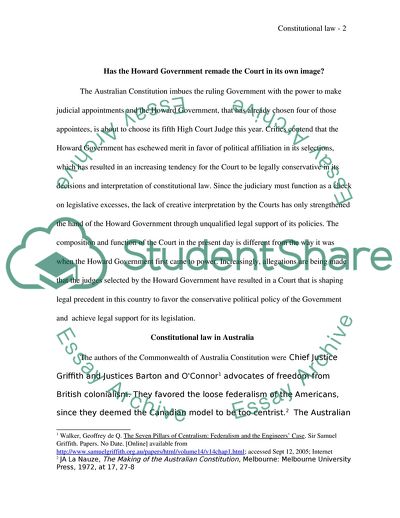Cite this document
(Is the Howard Government Remaking the Court in Its Own Image Case Study, n.d.)
Is the Howard Government Remaking the Court in Its Own Image Case Study. https://studentshare.org/law/1702818-essay-on-australian-constitutional-law
Is the Howard Government Remaking the Court in Its Own Image Case Study. https://studentshare.org/law/1702818-essay-on-australian-constitutional-law
(Is the Howard Government Remaking the Court in Its Own Image Case Study)
Is the Howard Government Remaking the Court in Its Own Image Case Study. https://studentshare.org/law/1702818-essay-on-australian-constitutional-law.
Is the Howard Government Remaking the Court in Its Own Image Case Study. https://studentshare.org/law/1702818-essay-on-australian-constitutional-law.
“Is the Howard Government Remaking the Court in Its Own Image Case Study”. https://studentshare.org/law/1702818-essay-on-australian-constitutional-law.


